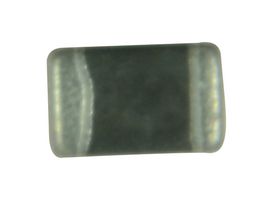More Choice, Next Day Delivery. Hence, you need a capacitor located “downstream” of the ferrite bead so that transient current can be sourced directly from the cap (i.e., without flowing through the bead). The FBC low-pass filter is potentially beneficial for any IC that is particularly sensitive to high-frequency noise on the power line. Placing and Selecting the Proper Ferrite Bead In our last post, we explained why it is important to use ferrite beads to control ringing in switching converters.

Ferrite Bead Selection Generally, ferrite beads fall into two categories (1): High-Q Beads—Typically used as resonators and must not be used in power isolation circuits. Low-Q Beads—Also known as absorptive beads, are more lossy and make good. Load current is in the microampere range.
An undamped ferrite bead filter can exh. LC resonance effects, and damping methods. Ferrite beads feature a hollow cylinder or a bead made of ferrite and are suitable for eliminating high-frequency EMI noise on any circuit design. Choose from an exclusive selection of ferrite bead filters.
Ferrite bead selection and choke are essentially resistive loads at high frequencies, which means they can cause a few problems in your circuit. When placing a bead you’ll need to think about voltage drop and heat dissipation. It it gets too high the ferrite bead impedance has to get extremely high at the RF frequency in question to achieve significant attenuation. The need for RF attenuation on signals exiting from a product enclosure may be needed even if not expected. Free UK Delivery on Eligible Orders!
See Mix Selection for other applications. NOW WITH QUANTITY PRICING FOR CLUB , VOLUME PURCHASERS! Bead dimensions are shown in the picture below and in the table as A, B, C. Application Note: Use impedances for each bead at your.
Simply put, a ferrite bead is not a ferrite bead is not a ferrite bead , etc. Most ferrite bead manufacturers provide a table which lists their part number, the impedance at some given frequency (usually 1MHz), the DC resistance (DCR), a maximum current rating and some dimensional information (see Table 1). All pretty much standard stuff. What is not shown in the data table is material. Actually, some ferrite beads and ferrite -core inductors are almost identical in construction, except that the ferrite bead uses a more “lossy” ferrite material because the manufacturer wants the bead to dissipate rather than store high-frequency energy.
All Slip On Ferrite Beads Ferrite beads are used for RF decoupling and parasitic suppression. When placed over a wire, cable or coaxial cable they suppresses common mode current flowing on the wire or wire bundle or the outside of the coax shield but does not affect the signal inside the coax cable or wire (differential current). Which we use will depend on what we know about our ferrite. If we know R P, LP, and CP and they are constant.

SMD ferrite bead inductors: There is a vast variety of surface mount ferrite bead inductors available as ready usable components with specified performance. These can be chosen according to the performance required and easily added to a new design. Low Prices on Bead Selection.
Please view our large selection of ferrite beads below. Now on parametric search at Digikey I can see. This video discusses the basics of ferrite beads, and their uses for basic filtering applications. It discusses and demonstrates how ferrites act as resistors at high frequencies, and how this is. Please revise your selection using valid characters only.

Add to compare Image is for illustrative purposes only. SMD Ferrite Design Kits - WE-CBF Series. From Wurth Elektronic, these WE-CBF series Ferrite Design Kits contain special SMD chip bead ferrites that can be put. Typically, EMI filters use a ferrite bead inductor and a capacitor. These features enhance the performance of the choke circuit while potentially reducing board space by replacing a larger chip ferrite bead with an equivalent, or higher-performing wirewound ferrite bead.
Manufacturers rate all ferrite beads according to a chart that shows impedance magnitude versus frequency (Figure 1). You normally use a ferrite bead in a series.
No comments:
Post a Comment
Note: Only a member of this blog may post a comment.